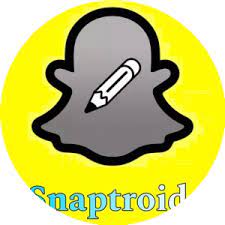iPhone 3G
It was a smartphone released by Apple in 2008. It was the second generation of the iPhone, and it featured GPS capabilities, support for 3G cellular networks, and the ability to install third-party applications. It had a 3.5-inch display with a resolution of 480×320 pixels, and it was powered by a 620 MHz ARM 11 processor. It also had a 2-megapixel camera, and it came with 8 or 16GB of storage. The iPhone 3G ran the iPhone OS, which later became known as iOS. It was succeeded by the iPhone 3GS in 2009.
Features of iPhone 3G
Here are some key features of the iPhone 3G:
- GPS: It was the first iPhone to include GPS capabilities, which allowed users to use location-based services and navigate using maps.
- 3G cellular network support: The iPhone 3G was the first iPhone to support 3G cellular networks, which offered faster data speeds compared to the original iPhone’s EDGE network.
- Third-party applications: The iPhone 3G was the first iPhone to support third-party applications, which could be downloaded from the App Store. This opened up a whole new world of possibilities for iPhone users and helped to drive the popularity of the iPhone.
- Multitouch display: The featured a 3.5-inch multitouch display, which allowed users to interact with the phone using multi-finger gestures.
- 2-megapixel camera: The iPhone 3G had a 2-megapixel camera, which allowed users to take basic photos and videos.
- iOS operating system: It ran the iPhone OS, which later became known as iOS. This operating system included a number of built-in apps, such as Mail, Calendar, and Safari, and it supported a wide range of third-party apps available on the App Store.
Dimension of iPhone 3G
The dimensions of the iPhone 3G are 115.5 mm (4.55 inches) in height, 62.1 mm (2.44 inches) in width, and 12.3 mm (0.48 inches) in depth. It weighed 135 grams (4.76 ounces). The iPhone 3G was slightly larger and heavier than the original iPhone, which had dimensions of 115.5 mm (4.55 inches) in height, 61.0 mm (2.40 inches) in width, and 11.6 mm (0.46 inches) in depth and weighed 133 grams (4.69 ounces).
Camera of iPhone 3G
It had a 2-megapixel camera that was located on the back of the device. It was capable of capturing photos and videos, and it had a few basic editing features, such as cropping and red-eye reduction. The camera had an LED flash to help improve low light performance.
The camera was not particularly advanced compared to contemporary smartphones, but it was a significant improvement over the original iPhone, which had no camera at all. Later models of the iPhone, such as the iPhone 4 and beyond, featured significantly improved cameras with higher megapixel counts and additional features.
Battery of iPhone 3G
The battery life of the phone depends on a variety of factors, including how it is used and the network conditions. Apple claimed that it had a talk time of up to 10 hours on 2G networks and up to 5 hours on 3G networks. It had a standby time of up to 300 hours.
The iPhone 3G used a lithium-ion polymer battery, which was not user-replaceable. If the battery needed to be replaced, it had to be done by a trained technician. It was recommended to charge the battery whenever possible, and to avoid letting it fully drain before recharging it.
It’s important to note that battery life can vary greatly depending on how the phone is used. For example, using GPS or streaming media may drain the battery more quickly than other activities. It’s also important to keep the phone updated with the latest software to ensure optimal battery performance.




